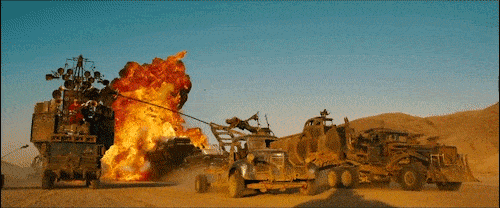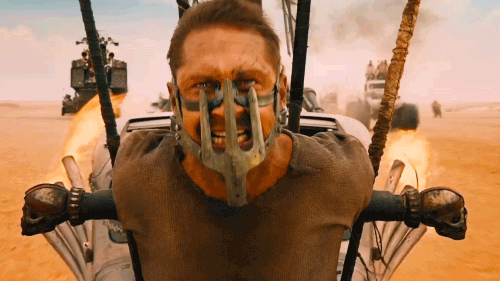One of the biggest complaints moviegoers have about contemporary movies is the overuse of computer generated imagery or CGI, especially with the advent of the summer blockbuster and the superhero genre. Many fans will fondly look back at the 80’s and 90’s when special effects were done with real things. The biggest gripe is that CG look cheap, they’re obvious, and they’re everything that’s wrong with blockbuster cinema.
We think lovingly back to the days of actually blowing up miniatures and practical effects, when actors had something to act in response to, instead of a bright green tennis ball. Viewers point to movies like Alien and Jurassic Park, all Christopher Nolan movies, and, most recently, Mad Max: Fury Road as beacons of the beauty and durability of practical effects.
Mad Max: Fury Road, in particular, has been loftily praised not just for its extraordinarily good story and acting, but Australian director George Miller’s insistence on using practical effects as much as he could.
However, Miller should also be lauded for his extensive, yet still tasteful, use of CGI. Yes, a lot of the stunts in the film were practically enacted, but George Miller still used CGI to add in cars and people, to render landscapes that weren’t actually there, and to help supplement his practical work.
So is CGI bad?
Not really. Audiences are only sick of CGI because they notice only the bad CGI and they’re understandably sick of those.

That is the point Freddie Wong, YouTuber, former Guitar Hero champion, and RocketJump co-creator makes in his new video essay titled, aptly, “Why CG Sucks (Except It Doesn’t).”
The co-creator of the hugely popular Video Game High School web series argues that the majority of audiences don’t notice CGI’s most frequent uses, like when it’s used to populate crowds or construct landscapes. Sure, there are things that CGI still struggles with, specifically the look of real people in motion in close up and some funky physics issues where the CGI creations look too light. But mo-cap rendering and a deft filmmaker can work around these areas to deliver impressive effects that many people confuse with either a practical solution or the real thing.
Like this scene from Forrest Gump. Look how they added in all those people. Remember this was back in 1993.
Or how VFX artists used CGI to add snow to this scene from David Fincher’s English adaptation of The Girl with the Dragon Tattoo.
Coming to the superheroes, Robert Downey Jr. was barely wearing his iron suit in Iron Man; it was added later with computers most of the time. In The Avengers, Joss Whedon and Industrial Light and Magic totally re-created the entire New York City skyline for Jeremy Renner to run around like he was on a playground, but it was all shot in front of green screens.
FreddieW, as he is popularly known on the internet, is particularly effusive in his praise of the Alfonso Cuaron science-fiction disaster movie, Gravity.
The basic takeaway, at the end of the day, is that perhaps it has less to do with the quality of the CGI used and more to do with the quality of the filmmaker using it and the film in which it’s ultimately used.[blockquote cite=”Freddie Wong” type=”left”]“Visual effects have always been a part of this art form. And CG is simply a tool on the filmmaker’s tool belt to tell a story, but when the end result is bad — maybe it’s not the tool’s fault…”[/blockquote]
Like Futurama said: “When you do things right, people won’t be sure you’ve done anything at all.”








